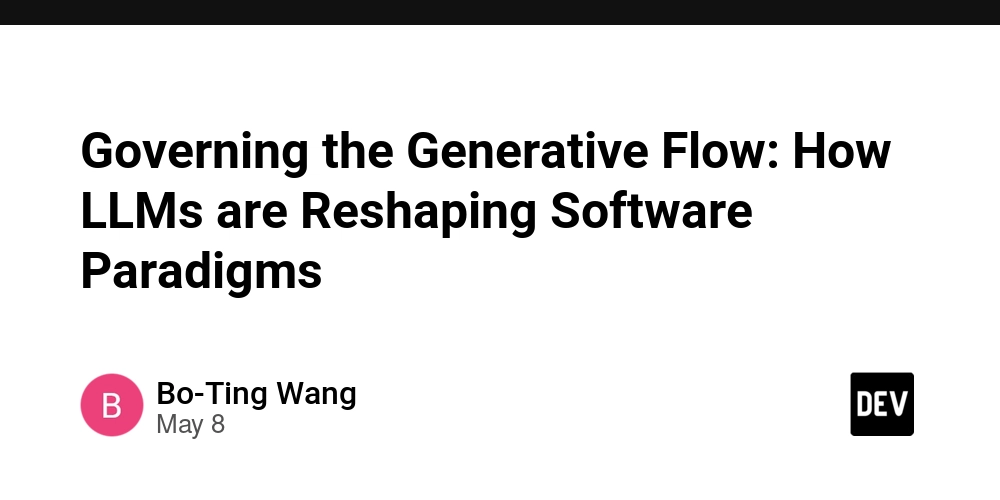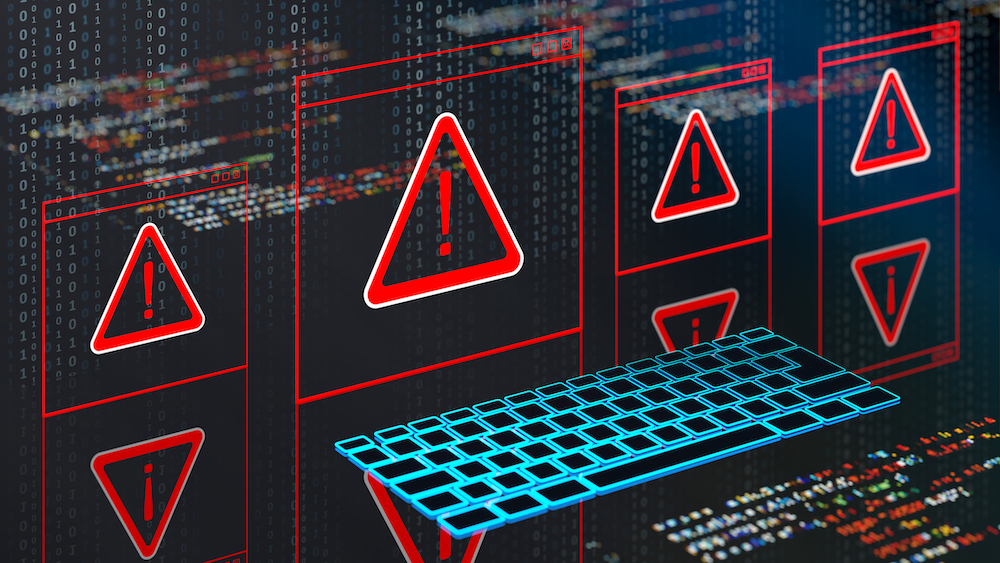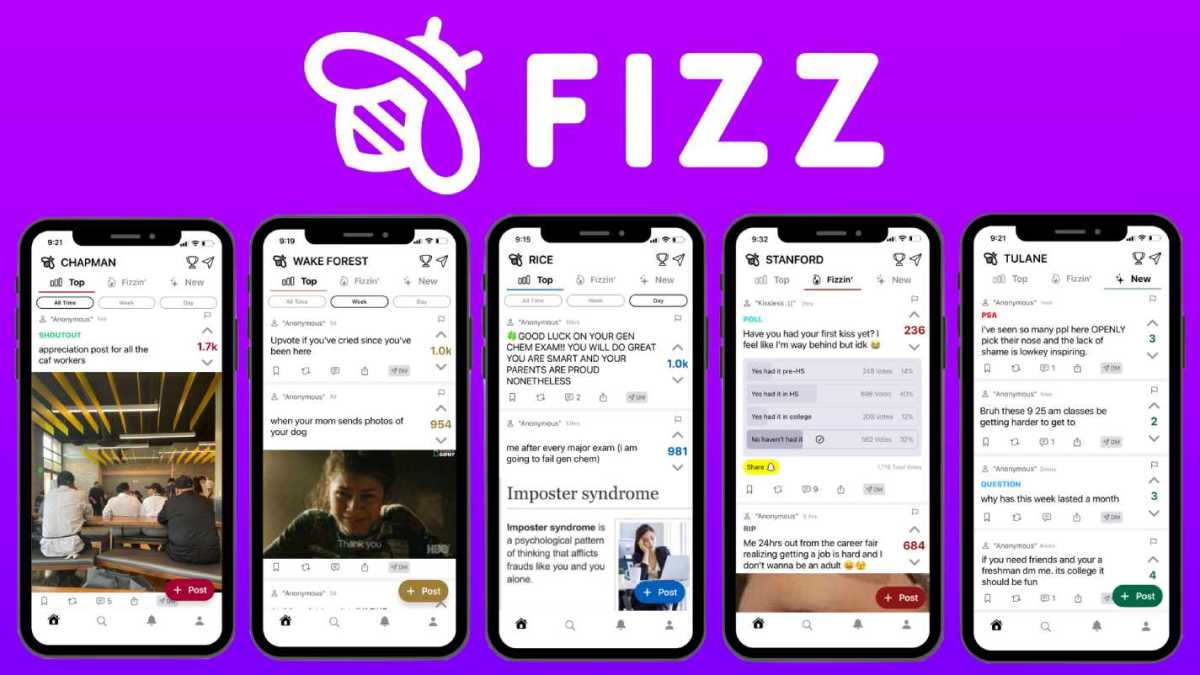Governing the Generative Flow: How LLMs are Reshaping Software Paradigms
In this article, we'll explore: The Dawn of New Software Paradigms: How Large Language Models (LLMs) are fundamentally altering the established ways we create software. The "Rapid Learning" Lens: Why the impact of these shifts is particularly significant for projects focused on quick iteration and market validation. Five Key Paradigm Shifts Unpacked: Generative Development: Moving from manual code construction to AI-driven generation and solution exploration. Human-AI Symbiosis: The evolution of the developer role into a collaborative partnership with AI. Specification & Validation Focus: Shifting emphasis from writing implementation details to precisely defining intent and rigorously verifying AI outputs. Continuous Knowledge Synthesis: How AI is transforming documentation from an afterthought into an ongoing, integrated process. Parallel Experimentation: Leveraging LLMs to test multiple hypotheses and design variations concurrently for faster insights. The Path Forward: Understanding the implications of these shifts and the emerging need to govern this new "generative flow" in software engineering. (Reference: This discussion draws from key insights detailed in the comprehensive framework, "LLM Integration in Software Engineering: A Comprehensive Framework of Paradigm Shifts, Core Components & Best Practices.") The arrival of powerful Large Language Models (LLMs) is more than just an incremental improvement in developer tooling; it's a seismic event triggering fundamental shifts in how we approach software creation. As these AI systems become increasingly integrated into our workflows, they are not merely accelerating existing processes but are actively reshaping the very paradigms of software development. Understanding these shifts is crucial for navigating this new landscape, especially when the imperative is to learn and adapt quickly in the market. While these paradigm shifts will undoubtedly impact all facets of software engineering, this exploration places a particular emphasis on their implications within contexts prioritizing Rapid Learning and Market Validation. In such environments—typical of new product development, startups, or teams exploring innovative features—the ability to quickly test hypotheses, gather user feedback, and adapt is paramount. Therefore, for each shift discussed, we will specifically consider its impact on accelerating these crucial learning cycles. These transformations, driven by the core desire to deliver value faster and more effectively, touch upon everything from initial ideation to long-term maintenance. A deeper exploration of these, along with their impact on core development components and engineering best practices, is detailed in a broader framework titled, "LLM Integration in Software Engineering: A Comprehensive Framework of Paradigm Shifts, Core Components & Best Practices." This article focuses specifically on illuminating those foundational paradigm shifts. Let's explore five key transformations we are beginning to witness: 1. From Manual Construction to Generative Development & Solution Exploration The Underlying Drive: The need to accelerate the translation of ideas into testable artifacts, maximizing the speed of learning. The Shift: We're moving away from a world where developers meticulously craft every line of code and every design document. Instead, development is becoming a process of guiding LLMs to generate initial versions, explore diverse implementations, or rapidly prototype various approaches to a problem. The human role is evolving towards high-level specification, critical refinement, and validating multiple LLM-generated options rather than solely authoring. Impact on Rapid Learning: This is a game-changer for rapid iteration. It allows teams to test significantly more hypotheses, UI/UX variations, and feature ideas in a fraction of the time it would take manually. The ability to "fail fast" with specific solution ideas is dramatically amplified. 2. From Singular Human Expertise to Human-AI Symbiosis & Augmented Cognition The Underlying Drive: The imperative to leverage all available intelligence—both human and artificial—to tackle complex problems with greater speed and efficacy. The Shift: The individual developer is no longer an isolated island of knowledge. LLMs are emerging as ever-present, broadly knowledgeable (though fallible) collaborators. They can offer instant suggestions, recall design patterns, generate boilerplate code, and even provide "second opinions" on technical decisions. The human developer becomes a curator, director, and critical evaluator in this symbiotic relationship. Impact on Rapid Learning: This augmentation can significantly reduce the cognitive load associated with routine or repetitive tasks. This frees up human developers to concentrate on higher-order problem-solving, deep user empathy, strategic architectural thinking, and rapid adaptation

In this article, we'll explore:
- The Dawn of New Software Paradigms: How Large Language Models (LLMs) are fundamentally altering the established ways we create software.
- The "Rapid Learning" Lens: Why the impact of these shifts is particularly significant for projects focused on quick iteration and market validation.
- Five Key Paradigm Shifts Unpacked:
- Generative Development: Moving from manual code construction to AI-driven generation and solution exploration.
- Human-AI Symbiosis: The evolution of the developer role into a collaborative partnership with AI.
- Specification & Validation Focus: Shifting emphasis from writing implementation details to precisely defining intent and rigorously verifying AI outputs.
- Continuous Knowledge Synthesis: How AI is transforming documentation from an afterthought into an ongoing, integrated process.
- Parallel Experimentation: Leveraging LLMs to test multiple hypotheses and design variations concurrently for faster insights.
- The Path Forward: Understanding the implications of these shifts and the emerging need to govern this new "generative flow" in software engineering.
- (Reference: This discussion draws from key insights detailed in the comprehensive framework, "LLM Integration in Software Engineering: A Comprehensive Framework of Paradigm Shifts, Core Components & Best Practices.")
The arrival of powerful Large Language Models (LLMs) is more than just an incremental improvement in developer tooling; it's a seismic event triggering fundamental shifts in how we approach software creation. As these AI systems become increasingly integrated into our workflows, they are not merely accelerating existing processes but are actively reshaping the very paradigms of software development. Understanding these shifts is crucial for navigating this new landscape, especially when the imperative is to learn and adapt quickly in the market.
While these paradigm shifts will undoubtedly impact all facets of software engineering, this exploration places a particular emphasis on their implications within contexts prioritizing Rapid Learning and Market Validation. In such environments—typical of new product development, startups, or teams exploring innovative features—the ability to quickly test hypotheses, gather user feedback, and adapt is paramount. Therefore, for each shift discussed, we will specifically consider its impact on accelerating these crucial learning cycles.
These transformations, driven by the core desire to deliver value faster and more effectively, touch upon everything from initial ideation to long-term maintenance. A deeper exploration of these, along with their impact on core development components and engineering best practices, is detailed in a broader framework titled, "LLM Integration in Software Engineering: A Comprehensive Framework of Paradigm Shifts, Core Components & Best Practices." This article focuses specifically on illuminating those foundational paradigm shifts.
Let's explore five key transformations we are beginning to witness:
1. From Manual Construction to Generative Development & Solution Exploration
- The Underlying Drive: The need to accelerate the translation of ideas into testable artifacts, maximizing the speed of learning.
- The Shift: We're moving away from a world where developers meticulously craft every line of code and every design document. Instead, development is becoming a process of guiding LLMs to generate initial versions, explore diverse implementations, or rapidly prototype various approaches to a problem. The human role is evolving towards high-level specification, critical refinement, and validating multiple LLM-generated options rather than solely authoring.
- Impact on Rapid Learning: This is a game-changer for rapid iteration. It allows teams to test significantly more hypotheses, UI/UX variations, and feature ideas in a fraction of the time it would take manually. The ability to "fail fast" with specific solution ideas is dramatically amplified.
2. From Singular Human Expertise to Human-AI Symbiosis & Augmented Cognition
- The Underlying Drive: The imperative to leverage all available intelligence—both human and artificial—to tackle complex problems with greater speed and efficacy.
- The Shift: The individual developer is no longer an isolated island of knowledge. LLMs are emerging as ever-present, broadly knowledgeable (though fallible) collaborators. They can offer instant suggestions, recall design patterns, generate boilerplate code, and even provide "second opinions" on technical decisions. The human developer becomes a curator, director, and critical evaluator in this symbiotic relationship.
- Impact on Rapid Learning: This augmentation can significantly reduce the cognitive load associated with routine or repetitive tasks. This frees up human developers to concentrate on higher-order problem-solving, deep user empathy, strategic architectural thinking, and rapid adaptation based on feedback. It can also accelerate onboarding to new technologies or complex domains by providing readily available (though always to be verified) information.
3. From Implementation-Focused to Specification-Driven & Validation-Centric Development
- The Underlying Drive: The necessity of ensuring correctness, fitness-for-purpose, and alignment with intent, especially when the speed of AI generation can outpace traditional manual verification capacities.
- The Shift: As LLMs take on a larger share of the "how" (the detailed implementation), the human's primary focus naturally intensifies on the "what" (crafting clear, unambiguous specifications) and the crucial "did it actually work as intended?" (rigorous validation and testing). Effective prompt engineering is becoming a core competency, essentially a new, highly leveraged form of precise specification. Testing, in turn, becomes the ultimate arbiter of whether LLM-generated output truly meets the defined intent.
- Impact on Rapid Learning: This shift inherently forces a clearer, earlier articulation of hypotheses and acceptance criteria before generation begins. This clarity can make the build-measure-learn feedback loop much tighter and more effective, particularly if tests can be rapidly defined and executed against LLM-generated code.
4. From Episodic Documentation to Continuous, AI-Assisted Knowledge Synthesis
- The Underlying Drive: The persistent challenge of maintaining shared understanding, context, and institutional knowledge within rapidly evolving and complex software systems.
- The Shift: Documentation is transforming from a distinct, often burdensome phase that lags behind development, into a more continuous, almost ambient byproduct of the development process itself. LLMs can assist in drafting documentation directly from code, summarizing changesets, explaining intricate code segments, or even tracking the rationale behind specific prompts or design choices made with AI assistance. Humans then curate, refine, and validate this AI-assisted knowledge synthesis.
- Impact on Rapid Learning: This makes it significantly easier to understand rapidly changing codebases, onboard new team members into fast-paced iterative projects, and revisit or understand past design decisions that may have involved LLM contributions. It reduces the traditional friction and overhead associated with documentation in environments that demand speed.
5. From Linear Problem Solving to Parallel Hypothesis Experimentation
- The Underlying Drive: The desire to explore the solution space more broadly and quickly to accelerate the discovery of product-market fit and optimal user experiences.
- The Shift: With LLMs capable of generating variations of features, UI components, or even entire workflows with relative ease and speed, development teams gain the ability to design and execute A/B tests, multivariate tests, or other forms of experimentation on a much larger scale and with greater frequency. The "build" phase for each experimental variant is significantly compressed.
- Impact on Rapid Learning: This paradigm directly accelerates market testing and the collection of user feedback across multiple solution candidates simultaneously. This can lead to a faster convergence on the most valuable features and a more data-driven approach to product evolution.
Navigating the New Flow
These paradigm shifts are not just theoretical; they are actively beginning to redefine the roles, skills, and processes within software engineering. Recognizing and understanding these transformations is the first step. The next is to consciously adapt our core development components and best practices to effectively govern this powerful generative flow, ensuring that we harness the speed and capabilities of LLMs to build not just faster, but also better, more reliable, and more valuable software.
For a deeper dive into how these shifts impact the specific components of software development and established engineering best practices, please refer to the comprehensive framework: "LLM Integration in Software Engineering: A Comprehensive Framework of Paradigm Shifts, Core Components & Best Practices." Our subsequent discussions will explore these adaptations in more detail.










































































































































































![[The AI Show Episode 146]: Rise of “AI-First” Companies, AI Job Disruption, GPT-4o Update Gets Rolled Back, How Big Consulting Firms Use AI, and Meta AI App](https://www.marketingaiinstitute.com/hubfs/ep%20146%20cover.png)
























































































































![[DEALS] The Premium Python Programming PCEP Certification Prep Bundle (67% off) & Other Deals Up To 98% Off – Offers End Soon!](https://www.javacodegeeks.com/wp-content/uploads/2012/12/jcg-logo.jpg)












































































































































_Aleksey_Funtap_Alamy.jpg?width=1280&auto=webp&quality=80&disable=upscale#)
_Sergey_Tarasov_Alamy.jpg?width=1280&auto=webp&quality=80&disable=upscale#)















































































































![Apple Developing New Chips for Smart Glasses, Macs, AI Servers [Report]](https://www.iclarified.com/images/news/97269/97269/97269-640.jpg)
![Apple Shares New Mother's Day Ad: 'A Gift for Mom' [Video]](https://www.iclarified.com/images/news/97267/97267/97267-640.jpg)
![Apple Shares Official Trailer for 'Stick' Starring Owen Wilson [Video]](https://www.iclarified.com/images/news/97264/97264/97264-640.jpg)






































































































